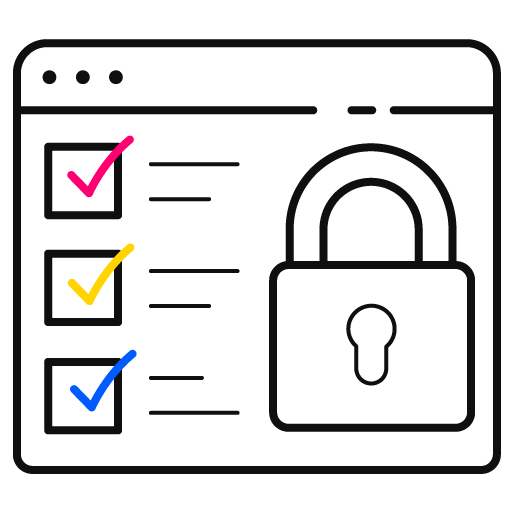Industry Knowledge
What is Adverse Media Screening? A Business Handbook
Learn everything about Adverse Media Screening—its benefits, best practices, and more—in this comprehensive guide.
- What is the role of adverse media screening in KYC & AML ?
- What are the challenges and limitations of AMS?
- What are the adverse media screening regulations in the US & EU?
- What are the main media sources?
- What is the Negative Media Screening Process?
- What are adverse media screening guidelines and best practices?
- Outsourcing
- TaskUs: Your Partner in Adverse Media Screening
Aligning with individuals or entities associated with a negative public image can be like walking a tightrope for businesses and professionals—one misstep and the fallout could be tremendous. It's not just about the optics; the association alone can expose you to insidious risks like money laundering or illegal financing, which can strike at the heart of your reputation and bottom line. This is why a vigilant approach to relationships is not just sensible but critical to safeguarding your hard-earned standing in a competitive and unforgiving marketplace.
Adverse Media Screening (AMS) is crucial in mitigating these risks. AMS involves thoroughly searching various media channels to identify any negative information about potential or existing clients. It is an essential tool in today's digital landscape that protects companies against unwelcome surprises and safeguards business operations.
AMS, commonly known as negative news screening, is a critical component for conducting customer due diligence (CDD). It goes beyond onboarding, playing a continuous role during KYC updates and becoming even more pivotal in Enhanced Due Diligence (EDD) for high-risk customers. Compliance isn't just a checkbox in AMS; it's essential, as it protects your business from the fallout of regulatory missteps and keeps your reputation intact in an environment where trust is your currency.
What is the role of adverse media screening in KYC & AML?
Adverse news screening is crucial in detecting and preventing fraudulent activities in regulatory compliance, especially in Anti-Money Laundering (AML) and Know Your Customer (KYC) regulations.
AMS is a complementary process to AML and KYC, providing an early warning system that exposes individuals or businesses that may be involved in illegal activities. It involves searching negative news across multiple media sources and strengthening due diligence beyond traditional background checks.
Businesses can protect their reputation, maintain customer trust, and avoid associating with criminal activities by engaging in this process.
What are the challenges and limitations of AMS?
While negative news monitoring offers numerous benefits, implementing it in practice can be challenging. Some challenges include:

Defining Adverse Media
With no agreed-upon standard, interpreting and categorizing negative news varies between institutions based on their tolerance for risk.

Data Volume and Authenticity
Managing a vast amount of news data, sorting through false positives, and verifying genuine threats can be daunting.

Operational Complexity
Real-time manual negative media screening across varied media outlets and public watchlists and tackling language differences and name conventions can be complex.

Regulatory Obligations
In the era of stringent KYC/AML policies, institutions must balance compliance with a user-friendly customer experience.

Technological Integration
The surge of AI-powered RegTech tools paves the path to navigate these challenges, bridging the gap between compliance targets and customer trust.
What are the adverse media screening regulations in the US & EU?
Financial institutions must follow strict international guidelines set by the US and the European Union (EU).
In the US, AMS is expected to adhere to AML protocols governed by the Financial Crimes Enforcement Network (FinCEN) and the Office of Foreign Assets Control (OFAC). These regulations stress the importance of actively monitoring and reporting suspicious activities, which means that financial institutions must implement strong systems for identifying and managing risks.
Similarly, the EU has its own stringent set of rules. The 6th Anti-Money Laundering Directive (6AMLD) and the 4th EU Money Laundering Directive require financial institutions to exercise increased due diligence, particularly in areas that are considered high-risk for money laundering and terrorist financing. This involves conducting risk assessments, monitoring transactions, and performing comprehensive CDD, including implementing AMS.
The Financial Action Task Force (FATF) also significantly shapes AMS by setting global AML standards that inform best practices. Financial institutions look to FATF's recommendations to ensure their AMS strategies meet international benchmarks, promoting a unified front in the global effort to thwart money laundering and terrorist financing.
In the context of these regulatory landscapes, the Wolfsberg Group addressed the challenges and potential of negative news screening within the CDD process in a recent paper, offering financial institutions a clearer understanding of effective and risk-sensitive AMS implementation that is compliant with the legal and regulatory requirements of their respective jurisdictions.
Although the regulations in these jurisdictions have some differences, they all focus on a common principle: the importance of thorough, ongoing, and proactive risk management solutions. Complying with these regulations keeps financial institutions on the right side of the law and boosts their ability to prevent fraudulent activities, maintain customer trust, and uphold business integrity.
What are the main media sources?
The range of sources and media types regarding adverse news screening is vast. These sources can be divided into two main categories:

Traditional News Outlets
These refer to print and broadcast media like newspapers, magazines, and news channels on TV and radio that have a reputation for providing reliable and professionally-vetted news and in-depth reports. While they are essential for AMS, they generate a large amount of data, which makes manual monitoring difficult.

Digital Media
This includes online versions of traditional newspapers, independent online-only news websites, blogs, chat rooms, forums, and even social media platforms. Although these sources provide real-time updates, unfiltered information, and insight into public opinion, their vastness and dynamic nature present unique challenges. Distinguishing between verified and unverified information or false positives is one such challenge.
To ensure effective negative news screening, companies must utilize various media sources. Negative information about a customer may not always be reported in mainstream news, and important details may be hidden in less prominent sources. For instance, identifying politically exposed persons (PEPs) in traditional and digital media is important. Along with industry publications, legal databases, regulatory announcements, and sanction lists, watchlists should also be considered as they provide different angles and depths of information.
By using both traditional and digital media, organizations can gain a more comprehensive view of potential risks. This enables them to make informed decisions and develop strong risk management strategies.
What is the Negative Media Screening Process?
Let's dive into the detailed process and understand the significance of each step:
Step 1 - Broad-Spectrum Media Screening: The process begins by conducting a comprehensive review of diverse online and offline media forms, including blogs, websites, social media channels, television, radio, and newspapers. This extensive scanning helps build a complete picture, capturing all potential risk signals, such as PEPs or any special interest persons (SIP).
Step 2 - Verify Authenticity: The news world is filled with genuine and fake stories. Thus, a crucial step in the adverse news screening process is to scrutinize the sources' authenticity and validate the legitimacy of the news. This practice involves verifying sources across different platforms, including traditional news sources, government agency reports, databases of international organizations, blogs, web articles, and social media posts.
Step 3 - Employ Automated Checks: Incorporate automated adverse media checks into your risk management strategy. Advanced technologies available today can review vast volumes of media sources quickly and accurately, making the procedure more efficient and yielding more reliable results.
Step 4 - Broaden Application Scope: Although AMS is extensively used in the financial sector to avert potential money laundering risks, other industries can also benefit from this screening process. Consider using AMS to identify other types of risks specific to your industry, such as environmental, social, and corporate governance (ESG).
Step 5 - Utilize Fuzzy Matching: Fuzzy matching in Adverse Media Screening (AMS) tools is a clever feature designed to spot potential risks, even amidst name variations and misspellings. Take "Jonathan Smith": with fuzzy matching, the tool will catch variants like "Jon Smith" or "John Smythe," ensuring a thorough sweep for any related adverse media and enhancing the overall precision of your screening process.
By following these steps systematically, organizations can conduct negative news monitoring more efficiently and effectively, better equipping themselves to mitigate risks and uphold business integrity in an age of information overload and dynamic risk landscapes.
What are adverse media screening guidelines and best practices?
Financial institutions need to have a comprehensive strategy when it comes to AMS. This strategy should be guided by industry expertise and the best practices outlined by Wolfsberg Group’s guidance on Negative News Screening.
Here are some key rules to follow: Implement a Well-Defined Policy: As part of CDD and Enhanced Due Diligence (EDD), it is important to establish clear procedures, including conditions for terminating a client relationship and guidelines for filing a Suspicious Activity Report (SAR).

Leverage Automated Tools
Use technology to your advantage. Tools incorporating AI and machine learning can automate data search and analysis, improving speed and accuracy while reducing manual workload.

Utilize Boolean Internet Search
You can refine your searches by using Boolean operators like AND, OR, NOT to more accurately identify potential red flags.

Ensure Quality of Customer Data
Ensuring quality customer data is crucial for AMS effectiveness. Accurate and current data—including personal, contact, occupational, and financial information—helps reduce screening errors and improves risk assessment. Regular data validation and updates are vital for maintaining screening accuracy.

Ensure Credibility and Timeliness of News Sources
Always use reliable and up-to-date news sources for screening. This helps reduce false positives and ensures timely detection of adverse news.
Outsourcing
As we’ve covered so far, AMS's complexities and vast scope can be overwhelming to perform in-house. Having said that, companies will surely benefit from bringing an external partner on board. But how do you guarantee that you choose the right partner and tools? Here are three critical factors to remember:

Expertise and Technology Utilization
The ideal partner should possess industry-leading expertise and leverage advanced technology to enhance the speed and accuracy of data screening. With a proven track record in your industry, a good AMS partner can provide unique insights into regulatory landscapes and help identify potential risks connected to special interest entities (SEIs).

Customization and Scalability
Every business has its risk profile and unique adverse media screening needs, which require a tailored solution. A good AMS partner should offer customized solutions aligning with your requirements. Additionally, as your business grows and evolves, your AMS needs may also change, so it's important to choose a partner that can provide the flexibility and scalability to accommodate future expansion.

Regulatory Compliance and Data Security
When dealing with sensitive information, data security and regulatory compliance are critical factors to consider. Your chosen partner must maintain robust data protection policies to ensure the confidentiality and integrity of your data. They should also be well-versed in the regulatory framework of your industry, ensuring full compliance at all times.
TaskUs: Your Partner in Adverse Media Screening
AMS is more than mere due diligence; it's a critical aspect of strategic risk management. You’ll need a proven and reputable partner to harness its benefits. At TaskUs, we provide effective solutions like AMS, identity management, compliance outsourcing, and more. With our best-in-class talent, technology-enabled innovation, and a global platform, we help businesses build resilience while protecting their growth.
We don't just stop at managing risk - we assist you in adapting seamlessly and positioning you for continued success.
References

We exist to empower people to deliver Ridiculously Good innovation to the world’s best companies.
Useful Links








